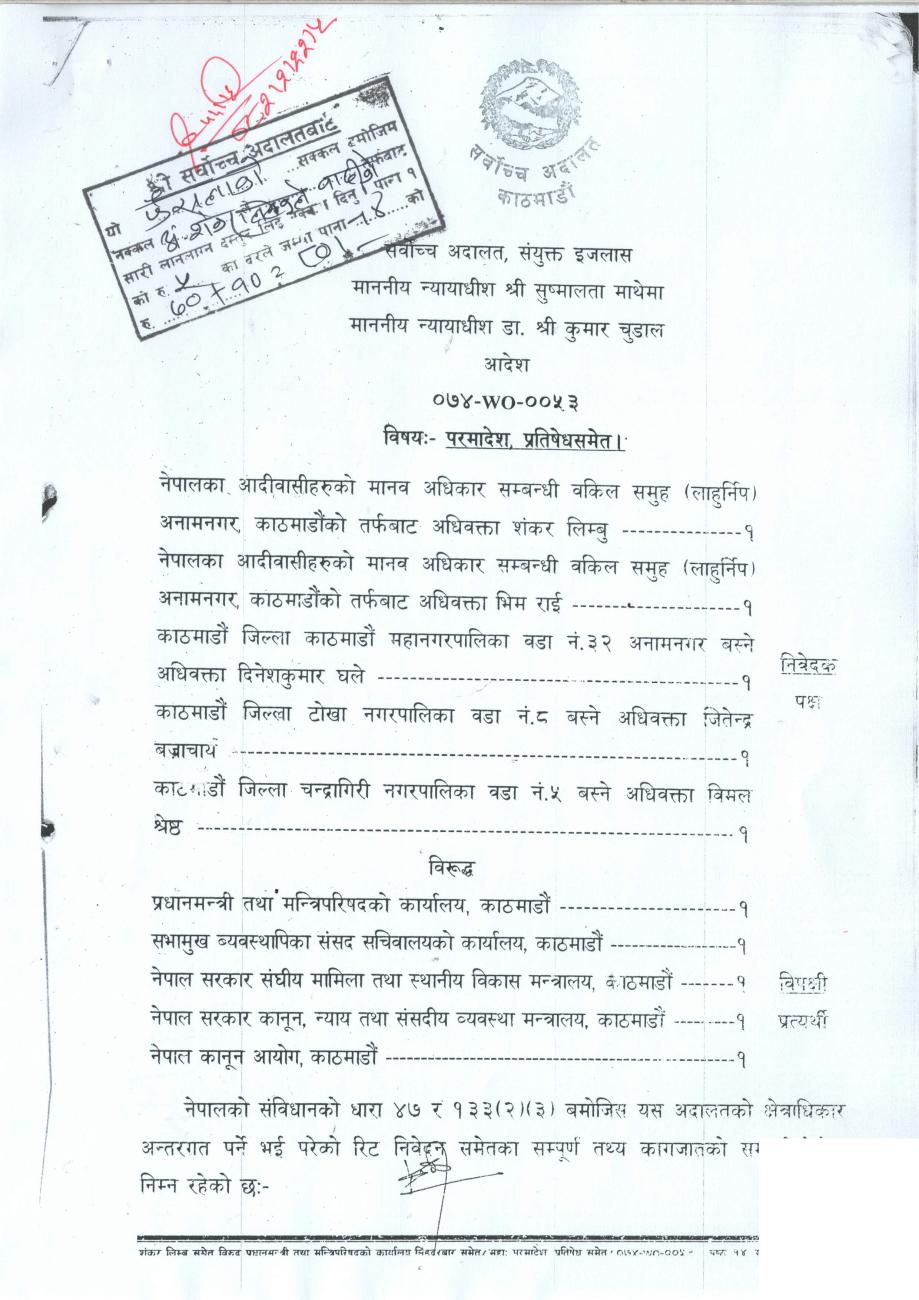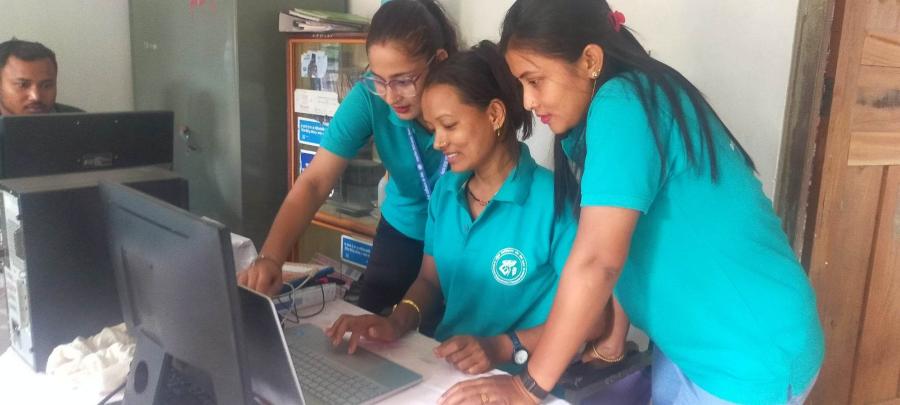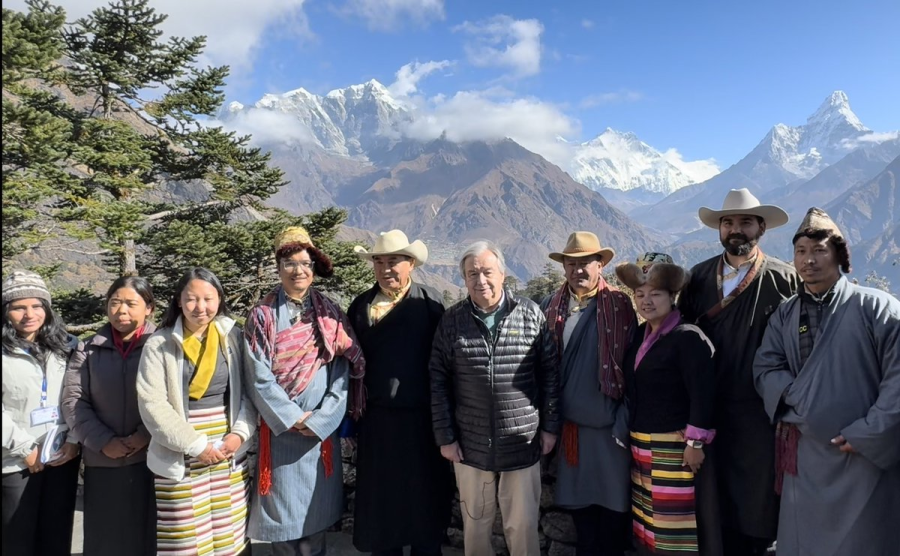
By Dev Kumar Sunuwar (Koĩts-Sunuwar, CS Staff)
On June 6, 2025, in a significant move for Nepal’s Indigenous Peoples, the Supreme Court of Nepal issued a directive requiring all levels of government—federal, provincial, and local—to create laws, policies, and programs that align with International Labour Organization (ILO) Convention No. 169 and the United Nations Declaration on the Rights of Indigenous Peoples (UNDRIP). This landmark decision resulted from a persistent legal challenge by a group of lawyers from the Lawyers’ Association for Human Rights of Nepalese Indigenous Peoples (LAHURNIP).
“Nepal has already committed to these international laws, and this decision now legally binds the federal, provincial, and local governments to implement them,” says Advocate Dinesh Kumar Ghale, Chairperson of LAHURNIP and a key figures in the case, further adding, “the Supreme Court’s order now mandates the recognition of Indigenous Peoples’ identity, language, culture and traditional land rights, as these are ‘minimum standards’ and the journey towards full rights ongoing.”
Crucially, the Court’s order explicitly upholds the right to Free, Prior and Informed Consent (FPIC), meaning that Indigenous nationalities must be consulted and their consent obtained before any measures affecting their lands, cultures, or livelihoods are adopted. This provision is crucial in preventing forced displacement, environmental degradation, and cultural erosion, often resulting from development projects or policy changes imposed without the participation of concerned Indigenous Peoples. The ruling also clarifies that responsibility for upholding these standards extends to provincial and local governments, alongside the federal government, ensuring that Indigenous Peoples have legal avenues to defend their rights at every level of governance.
Nepal’s commitment to the rights of Indigenous Peoples on the international stage dates back to 2007. On August 22, 2007, the Parliament of Nepal unanimously ratified ILO Convention No. 169, making it the first country in South Asia and only the second in Asia to do so. Shortly after, on September 13, 2007, Nepal voted in favor of the UNDRIP. These actions signaled a strong commitment by Nepal to upholding the rights of Indigenous Peoples.
Despite these early commitments, implementation within Nepal has largely remained stagnant. While the government has occasionally acknowledged these international instruments in policy, concrete initiatives for their implementation have been minimal. Following the adoption of the 2015 Constitution, Nepal undertook a comprehensive review and amendment of its laws to ensure consistency with the new constitutional framework. However, this process largely overlooked the obligations outlined in ILO Convention No. 169 and UNDRIP.
An earlier attempt at implementation was made in 2008, following the ratification of ILO Convention No. 169. The government then formed a task force comprising representatives from relevant ministries, the National Foundation for Development of Indigenous Nationalities (NFDIN), and the Nepal Federation of Indigenous Nationalities (NEFIN). This task force developed a national action plan for implementing ILO Convention No. 169; however, this plan was never officially endorsed by the government of Nepal.
For nearly two decades since their ratification and adoption, the rights enshrined in the ILO Convention No. 169 and UNDRIP remained largely unenforced in Nepal's domestic legislation. This lack of legal enforcement left Indigenous Peoples vulnerable to exploitation and marginalization. Even with constitutional provisions recognizing Indigenous Peoples’ rights, the absence of precise legal mechanisms allowed government agencies and private developers to proceed with projects without FPIC and adequate consultation with Indigenous nationalities, often leading to conflicts over land, resources, and the preservation of cultural heritage.
The impetus for the recent judicial intervention began on August 9, 2017, when LAHURNIP filed a petition. A significant development occurred on February 8, 2024, when the Supreme Court issued directives to the government in response to this petition, which was subsequently made public in June 2025. This ruling now compels the government of Nepal to align its legal framework with its international obligations under ILO Convention No. 169 and UNDRIP, aiming to close a critical gap in Nepal's human rights protections for Indigenous peoples.
"Every August 9th, on the International Day of the World's Indigenous Peoples, LAHURNIP reaffirms its ongoing legal fight against the government in Nepal's Supreme Court," states Advocate Shankar Limbu, a lead petitioner of the case. "This particular petition is just one example of our sustained efforts to challenge the social and human rights violations faced by Indigenous nationalities. We advocate for their inherent rights, including land, culture, and the fundamental principle of FPIC, before any development impacts their ancestral territories. Our goal is to ensure Nepal, as a signatory to international instruments like ILO Convention No. 169 and UNDRIP, fully integrates these commitments into its national laws and practices, thereby upholding the dignity and autonomy of Indigenous Peoples."
The petition leading to this landmark decision was spearheaded by a group of prominent human rights lawyers, including Bhim Rai, Dinesh Kumar Ghale, Jitendra Bajracharya, Bimal Shrestha, and Shankar Limbu, all of whom have dedicated their careers to advocating for the rights of Indigenous Peoples in Nepal. Their collective efforts underscore the ongoing struggle of Indigenous rights activists to hold the government accountable for its international commitments.
“The ruling is a turning point,” says Advocate Bhim Rai, another petitioner, “as it reaffirms the legal standing of Indigenous Peoples in decision-making processes that directly impact their lives.”
The implications of this decision are far-reaching. First, it establishes a legal precedent that can be invoked to challenge existing or future laws and policies that fail to meet international standards for the rights of Indigenous Peoples. Second, it empowers Indigenous nationalities to demand meaningful participation in key decision-making bodies and development projects, ensuring that their voices are heard and their rights are respected. Third, it places an obligation on provincial and local governments to integrate FPIC into their governance structures, preventing the kind of top-down decision-making that has historically excluded Indigenous Peoples’ perspectives.
However, while the ruling is a monumental step forward, challenges remain in its implementation. Experience has shown that legal victories do not always translate into tangible change on the ground. Indigenous Peoples’ activists and leaders have expressed cautious optimism, emphasizing the need for robust follow-up measures to ensure compliance. Key among these measures are the drafting of new legislation that explicitly incorporates FPIC and UNDRIP principles, training government officials on their obligations regarding Indigenous Peoples’ rights, and establishing independent monitoring mechanisms to hold authorities accountable.
The ruling also aligns Nepal with global human rights standards at a time when Indigenous Peoples’ movements worldwide are gaining momentum. Countries such as Canada, Australia, and several Latin American nations have faced increasing pressure to recognize Indigenous Peoples’ land rights and self-determination, often through legal battles similar to the one just won in Nepal. By affirming the supremacy of international Indigenous rights law, Nepal’s Supreme Court has positioned the country as a potential leader in human rights enforcement in South Asia.
For Nepal’s 61 officially recognized Indigenous Peoples known as Indigenous Nationalities or Adibasi Janajati, comprising 35.08 percent of Nepal’s 30 million population, this decision is more than a legal mandate—it is a long-overdue recognition of their sovereignty and dignity. Indigenous Peoples have historically faced systemic discrimination, from land dispossession to cultural assimilation policies. The Supreme Court’s intervention presents an opportunity to rectify these injustices. Still, its success will ultimately depend on the government of Nepal’s political will to enforce the ruling in good faith.
As the country moves forward, the spotlight will remain on how federal, provincial, and local authorities respond to the Court’s directive. The question remains whether they will take proactive steps to consult with concerned Indigenous Peoples in policymaking, or will they resist change, forcing further litigation. The answer to this question will determine whether this landmark ruling becomes a catalyst for genuine progress or remains another unfulfilled promise in Nepal’s long struggle for justice for Indigenous Peoples.
For now, the decision stands as a beacon of hope for Indigenous Peoples across Nepal, affirming that their rights are not merely aspirational but legally enforceable. The Supreme Court has spoken—the next move belongs to the government.
Advocate Bhim Rai says, "It means that issues of Indigenous peoples have been grappled with for generations—from land disputes and cultural preservation to language rights and social justice—can now be addressed through the lens of ILO 169 and UNDRIP. This establishes a minimum standard for resolution, enabling tangible progress in areas such as infrastructure projects that impact ancestral lands. Our goal is to ensure that this judicial order translates into real, on-the-ground changes, granting Indigenous Peoples’ genuine right to self-determination, autonomy, and dignity."


